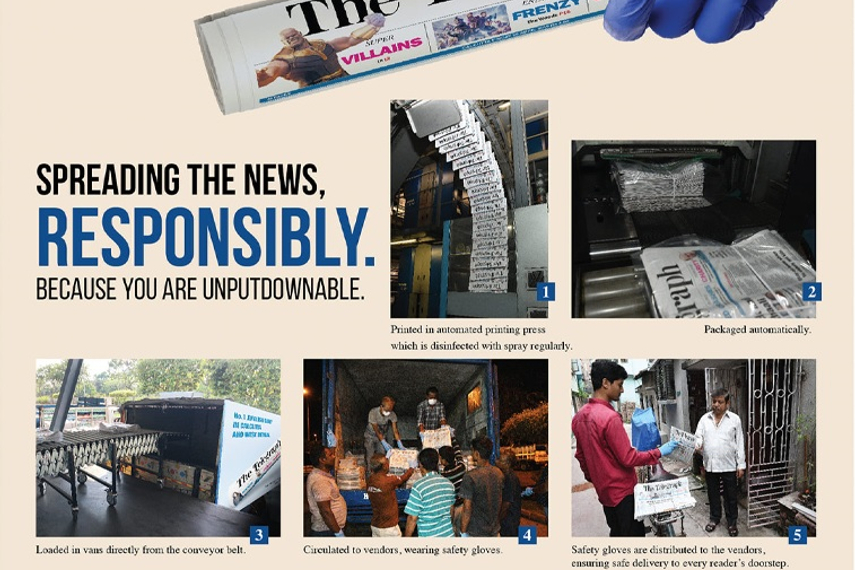The International News Media Association's executive director and CEO has been obliged to reiterate that daily newspapers delivered to readers' doorsteps are safe to pick up and read. Earl Wilkinson noted there has not been an incident of the COVID-19 virus being transmitted from a print newspaper, print magazine, print letter, or print package, according to the top doctors and scientists.
The reassurance comes following growing public concerns, social media rumours and
counter-reassurance from publishers that they're not delivering anything more than the news to readers' homes.
According to World Health Organisation (WHO), it is safe to receive a package from an area where COVID-19 has been reported.
It states, "The likelihood of an infected person contaminating commercial goods is low and the risk of catching the virus that causes COVID-19 from a package that has been moved, travelled, and exposed to different conditions and temperature is also low."
A study from the National Institutes of Health (NIH), Centers for Disease Control (CDC), UCLA, and Princeton University scientists showed the varying stability of the virus on different surfaces. Across aerosols, plastic, stainless steel, copper, and cardboard, the lowest levels of coronavirus transmission possibilities were via copper because of its atomic makeup and cardboard — presumably because of its porous nature.
Emphasising that the virus spreads when transmitted by aerosols, researchers duplicated these droplets and measured how long they stayed infectious on surfaces.
The coronavirus lasts longest on smooth, non-porous surfaces. Researchers found the virus was still viable after three days on plastic and stainless steel. Researchers stated that this is not as ominous as it sounds because the strength of the virus declines rapidly when exposed to air - it loses half its potency every 66 minutes, it is only one-eighth as infectious after three hours when it first landed on a surface. Six hours later, viability is only 2 per cent of the original, researchers found.
The virus was not viable after 24 hours on cardboard.
According to the study, for newsprint, which is much more porous than cardboard, virus viability is presumably even shorter.
In a Washington Post article, author Joel Achenbach stated:
“Outside, on an inanimate surface, the virus will gradually lose the ability to be an infectious agent. It may dry out, for example. It can degrade when exposed to ultraviolet radiation from the sun. A person sneezing on a surface may deposit many thousands of virus participles, and some may remain viable for days. Still, the likelihood of a person who comes into contact with the remnants of that sneeze goes down over time, because most infections are the result of a large viral load.”
Experts worldwide feel certain surface transmission of the coronavirus through newsprint is highly unlikely.
In an interview on BBC Radio Scotland, John Innes Centre virologist George Lomonossoff, who uses molecular biology to understand the assembly and properties of viruses in the United Kingdom, stated, “Newspapers are pretty sterile because of the way they are printed and the process they’ve been through. Traditionally, people have eaten fish and chips out of them for that very reason. So all of the ink and the print makes them actually quite sterile. The chances of that are infinitesimal.”




.jpg&h=334&w=500&q=100&v=20250320&c=1)



.png&h=334&w=500&q=100&v=20250320&c=1)

.png&h=334&w=500&q=100&v=20250320&c=1)

.png&h=334&w=500&q=100&v=20250320&c=1)








